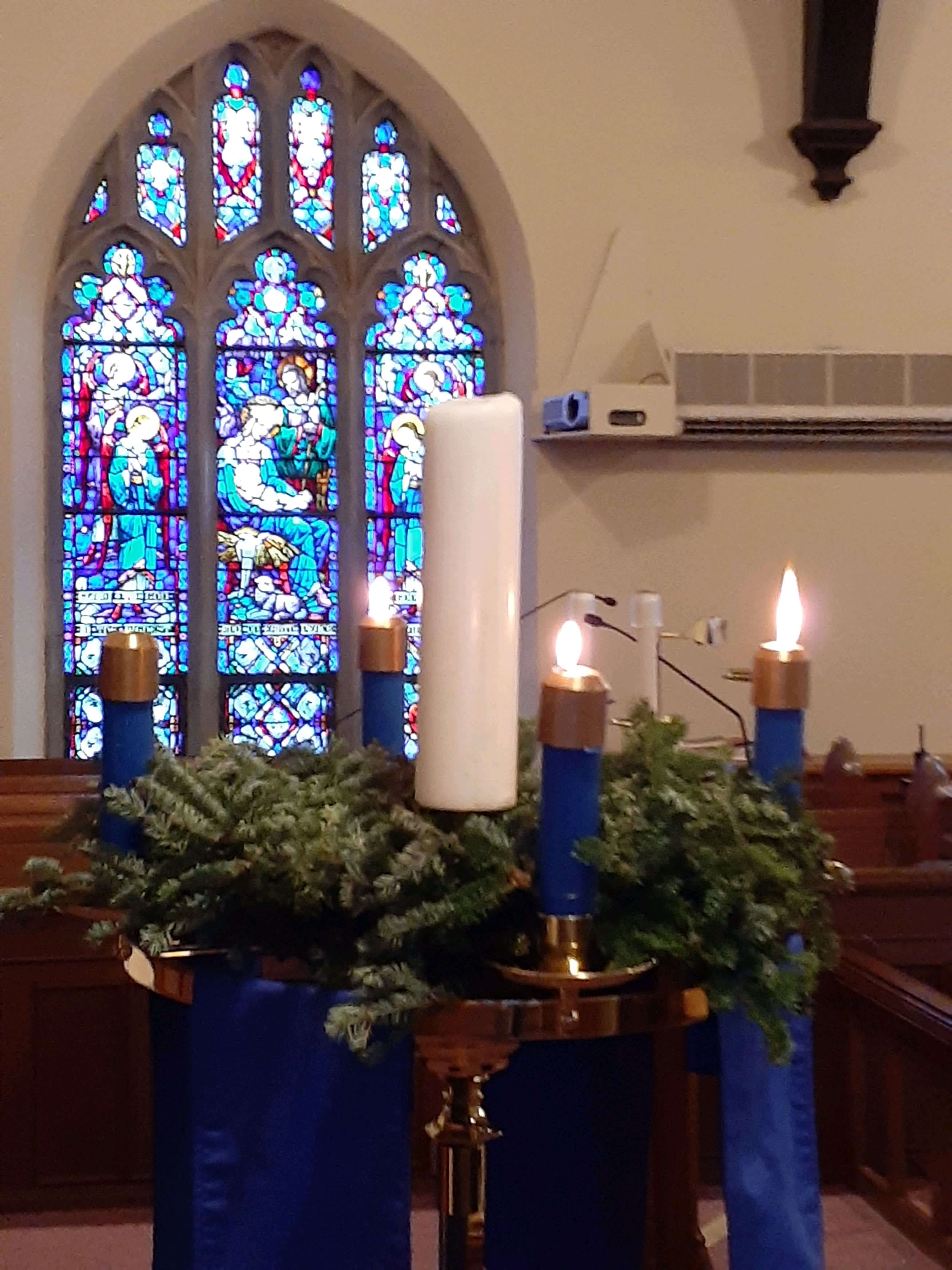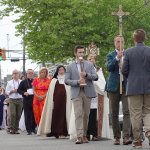CAPE MAY – “I like taking my time to prepare for Christmas,” the Rev. Alan Leonard said Dec. 8, referring to celebrating Advent.
More than a series of Sundays in the liturgical calendar, Advent focuses on preparing one’s heart for Jesus Christ’s birth. Yet, according to Leonard, Advent also points forward to when evil and suffering will be eliminated.
From the babe in the manger to a triumphant king, Jesus is the heart of Advent.
What Does Advent Mean?
As an Episcopalian priest, Leonard looks forward to the celebration every year. The Episcopal Church of the Advent, in Cape May, bears the same word, like a continuance all year.
“Advent is the start of the liturgical year,” Leonard explained, during a phone interview. Liturgy is a form of public worship.
In Christianity, the sermon, prayers, and sacraments, i.e., communion, are laid out in the liturgy. Roman Catholics, Episcopalians, Lutherans and Methodists follow the calendar for each Sunday. Presbyterians have their own liturgy.
Advent comes from the Latin “adventus,” meaning “arrival.” According to historical texts, celebrations began in Europe around the fourth or fifth centuries. Leonard said an exact time to pinpoint Advent is “murky.”
What’s the Purpose?
During the Dark Ages, baptisms were conducted after a season of preparation, usually around Jan. 6, the Feast of Epiphany. Epiphany is the alleged time when the wise men arrived, in Bethlehem, to worship the Christ child.
Life was hard for most people, but 40 days of penance (confessing sin), prayer and fasting were observed before Epiphany. Not until the sixth century was Advent linked to Christmas, a time of joy and light in winter.
“It (Advent) has changed over the years,” Leonard said.
Today, Advent focuses on the dual aspect of preparing for Christmas and Jesus’ second coming.
“It’s more up than down,” the Rev. Mark Bruesehoff, of Holy Trinity Lutheran Church, in Wildwood, said Dec. 10.
How’s Advent Celebrated?
As a Lutheran minister, Bruesehoff testifies to changes in tradition, especially where the Advent wreath is concerned.
In every Advent wreath stands four candles: Two are purple, one is pink, and one, in the center, is white. The purple candles represent repentance, pink reminds people of the Virgin Mary’s joy, and white represents Christ. One candle is lit every Sunday before Christmas, accompanied by a specific prayer.
Advent wreaths first appeared, in Germany, in 1839. A Lutheran minister used a wagon wheel, with candles, to explain Advent to children.
However, many Lutheran Advent wreaths showcase blue and white candles instead of the traditional purple and pink. The change is a subtle shift from focusing on repentance to hope and expectation (https://bit.ly/3qQ5bV1).
The ancient Christian hymn “O Come, O Come, Immanuel” is also sung in different denominations.
Bruesehoff explained how the church should look forward to Jesus’ return to earth and the final judgment of sin and evil. The anticipation for Christmas is keen, and so is the longing for peace in a better world.
The Rev. Jeff Elliot, of Cape May Lutheran Church, concurred with Bruesehoff regarding Advent.
Elliot Dec. 9 said the congregation continues to meet virtually due to COVID-19. Lighting the Advent candles is also conducted virtually, allowing members and friends to share in the special moment.
Personal Hope
As Cape May County sees an uptick in cases, holiday traditions feel the impact of smaller gatherings and fewer public events. However, for Dorothy Kulisek, a North Wildwood resident, a slower pace helps her appreciate Advent more.
“Advent is rooted in my upbringing in the Roman Catholic faith. Everything about it is embedded in my heart,” Kulisek said, via social media Dec. 8.
Although no longer Roman Catholic, Kulisek said Advent helps her “counteract the busy commercial Christmas season that has sadly become so far removed from its true meaning.”
As a writer and small business owner, Kulisek also loves to paint, capturing nature’s beauty on canvas. The economic fallout due to the coronavirus has not dampened her spirits or hope for better days ahead.
“Holidays are now ‘holy-days’ that allow me to experience the miracle of the birth of Christ,” Kulisek concluded.
Leonard also looks forward to better days. The Episcopal Church of the Advent congregation is not meeting in person and, like Cape May Lutheran Church, celebrated Advent apart.
“This is only temporary,” Leonard said. He holds to the belief that God will, one day, end all suffering and evil. Leonard wants everyone to carry the promise of hope and light with them, whether they observe Advent or not.
“We have this promise from God,” he added.
Faith Matters is an ongoing series exploring the connection between individuals and their faith, impacting their families, community, and beyond. Those with a story of faith to share should contact the writer at rrogish@cmcherald.com.








